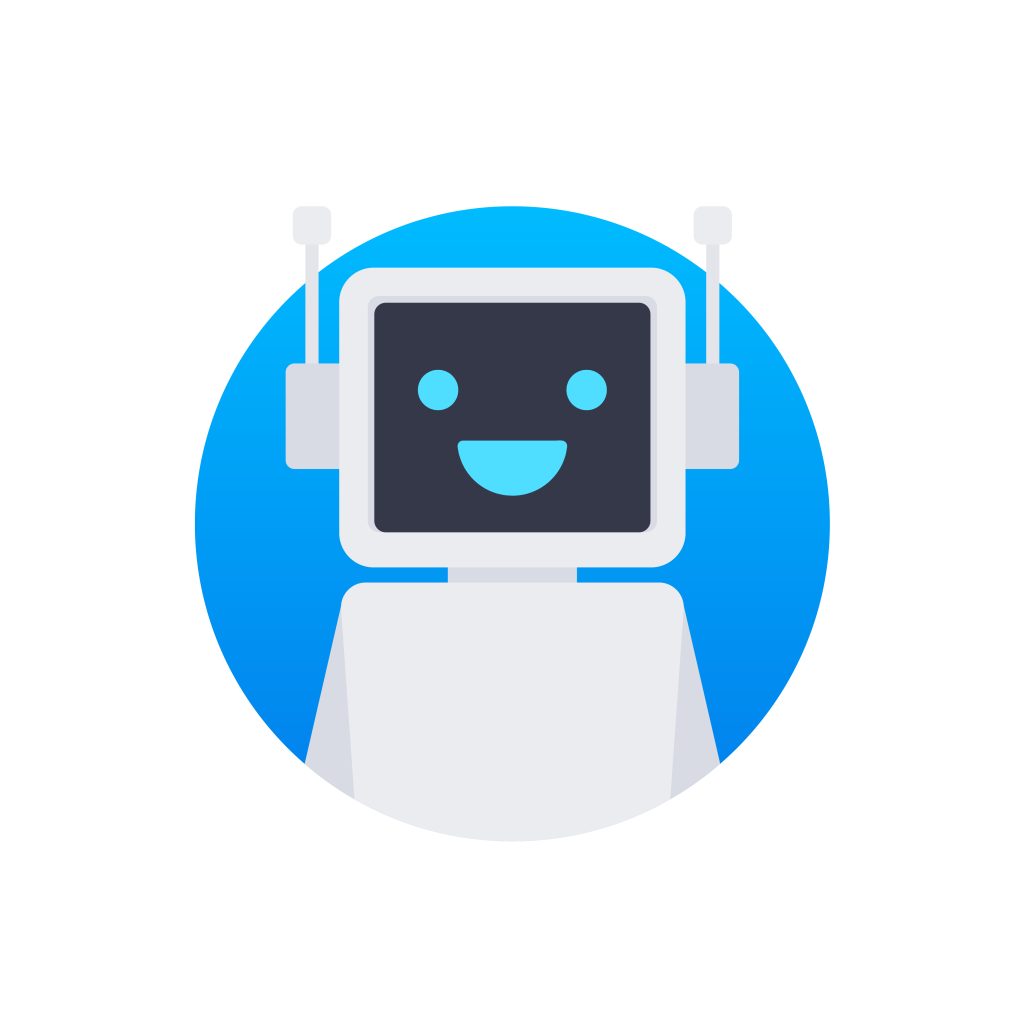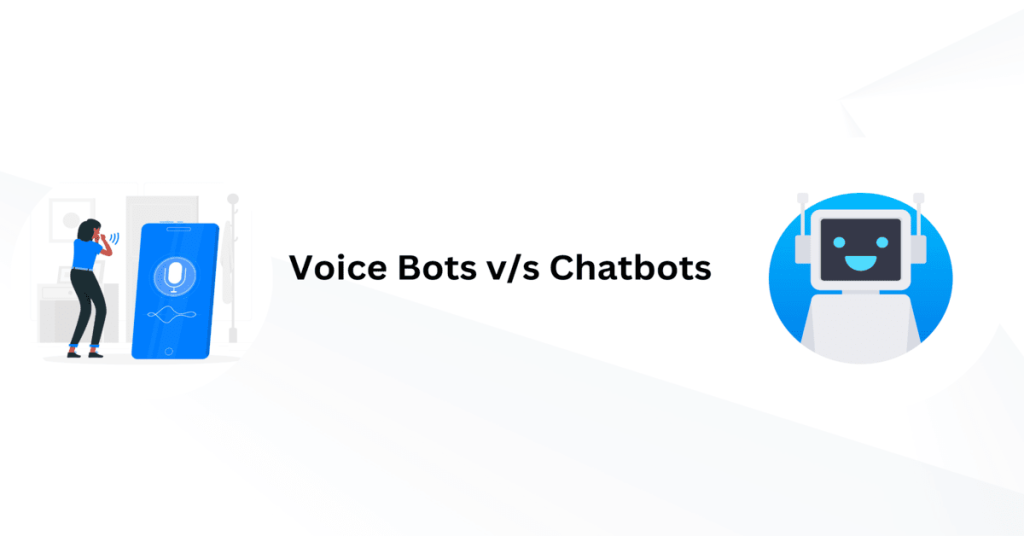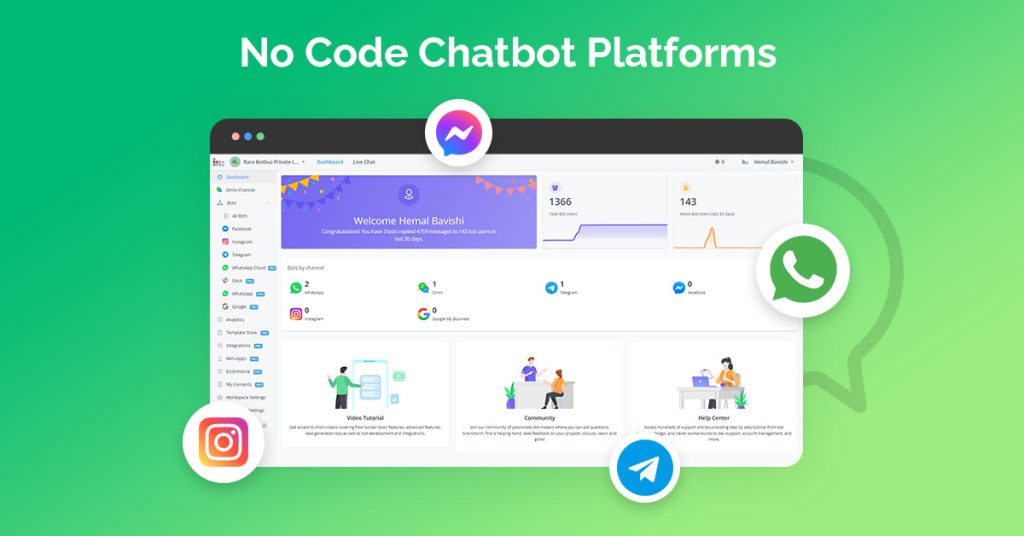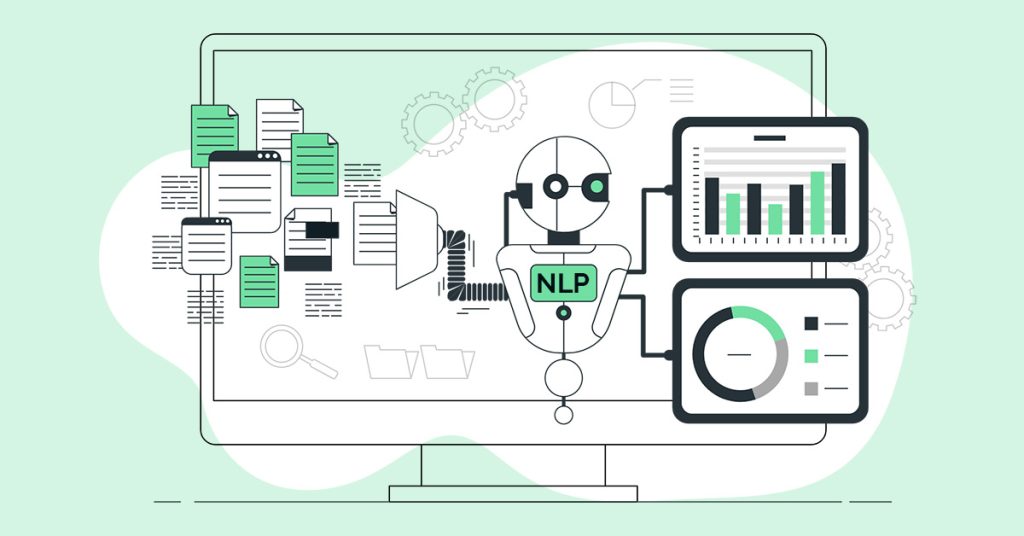Choosing the Right Voice Bot or Chatbot for Your Business :
In the age of instant gratification, customers crave seamless and personalized interactions. This is where conversational AI, in the form of voice bots and chatbots, takes center stage. These virtual assistants offer distinct experiences and cater to different needs. Choosing the right one for your business is crucial, as it can make or break your customer journey.
Understanding the Duo :
Chatbots : These text-based companions reside on websites, apps, or messaging platforms. They rely on Natural Language Processing (NLP). It interprets text inputs and responds with pre-programmed scripts or dynamically generated answers. Chatbots excel at handling simple tasks like answering FAQs & collecting information. It also directs users to relevant resources.
Voice Bots : These vocal assistants live in smart speakers, phone apps & connected devices. They leverage speech recognition and NLP. It helps to understand spoken language and respond in kind. Voice bots shine in hands-free situations. It offers convenient access to information & controls smart home devices.
The Importance of the Right Fit :
Choosing the right conversational AI is not a one-size-fits-all affair. It’s a strategic decision that hinges on your unique business needs & target audience. Consider these factors:
Customer Journey : Where do your customers encounter your brand? Do they prefer text-based interactions on websites or voice assistance during phone calls?
Complexity of Tasks : Are you handling simple queries or complex requests that require nuanced understanding & human-like interaction?
Brand Personality : How do you want your customers to perceive your brand? Chatbots can offer a professional and efficient experience. While voice bots can cultivate a more personalized and friendly tone.
Understanding Voice Bots :
Voice bots have emerged as the cutting edge of human-computer interaction. It blurs the lines between technology and natural conversation. These AI-powered systems use natural language processing & speech recognition to understand & respond to spoken commands. Thus, creating an interactive experience akin to conversing with another person. Unlike their rigid predecessors, interactive voice response systems, voice bots can interpret the nuances of human language. Thus, adapting their responses to context and intent. This allows them to engage in open dialogue, answer questions, complete tasks & even provide personalized assistance.
Advantages and Strengths :
The benefits of voice bots are numerous. They offer 24/7 availability, ensuring immediate assistance regardless of time or location. Their ability to handle multiple conversations simultaneously increases efficiency. Thus, reducing wait times and improving customer satisfaction. Voice bots excel at repetitive tasks. It frees up human agents for more complex inquiries. Additionally, their data-driven nature allows for continuous learning & improvement. Thus, leading to more accurate & personalized interactions over time.
Use Cases and Industries :
The applications of voice bots are vast and ever-expanding. In customer service, they handle basic inquiries, reset passwords & answer FAQs. It helps in reducing wait times and improves customer satisfaction. In healthcare, they can schedule appointments, answer medical questions & provide basic health advice. The education sector leverages voice bots for personalized learning experiences. It provides feedback & answers student queries in real-time. Smart homes utilize voice bots for controlling lights, temperature & appliances. Thus, offering a seamless and intuitive way to manage living spaces.
Challenges and Limitations :
Despite their potential, voice bots are not without limitations. Accuracy remains a hurdle, as complex language & accents can pose challenges for NLP algorithms. Limited empathy can hinder their ability to handle sensitive situations. It requires careful design to ensure a human-like touch. Additionally, security and privacy concerns necessitate robust safeguards to protect user data.
Understanding Chatbots :
Chatbots, the ever-evolving digital companions, have revolutionized human-computer interaction. They are computer programs stimulating human conversation, through text or voice interfaces. Sophisticated algorithms powered by Natural Language Processing & Machine Learning enable them to understand user intent. Thus, it helps them to respond accordingly & even learn from past interactions. This functionality makes them more than just automated response machines. They become dynamic assistants, companions and information-givers in a variety of scenarios.

Advantages and Strengths :
Chatbots offer a plethora of benefits. Their tireless nature allows for 24/7 availability. Thus, providing instant support and information when needed. They excel at handling repetitive tasks, freeing human resources for more complex problem-solving. Furthermore, their ability to personalize interactions & learn user preferences fosters a sense of convenience & familiarity. For businesses, chatbots can significantly reduce customer service costs. It optimizes lead generation and enhances brand engagement. Their multilingual capabilities open doors to wider audiences, further expanding reach and impact.
Use Cases and Industries :
The versatility of chatbots shines in diverse applications. In customer service, they resolve simple queries & address complaints. It also offers product recommendations, easing the burden on human agents. Education takes advantage of chatbots for personalized learning. Thus, providing instant feedback and tailored practice drills. Healthcare utilizes them for symptom checking, appointment scheduling & medication reminders. Thus, promoting health awareness and accessibility. Chatbots even enhance entertainment, powering interactive storytelling, games, and virtual companions. Thus, blurring the lines between human and machine interaction.
Challenges and Limitations :
Yet, despite their strengths, chatbots have limitations. Their dependence on NLP can lead to misinterpretations, causing frustration & hindering communication. Complex queries or emotional conversations often require human intervention, exposing their AI shortcomings. Data privacy and security concerns remain paramount. Especially with the influx of personal information handled by chatbots. Ethical considerations regarding their potential bias and manipulation warrant careful attention.
Comparing Voice Bots and Chatbots :
In the marketplace of conversational AI, voice bots & chatbots perform a captivating duet. Both offer unique charms and limitations. Both aim to engage users & streamline experiences. But their approaches diverge when it comes to interaction, accessibility, integration & customization.
- User interaction and engagement :
Picture chatbots offering a visual waltz, where questions take shape in typed sentences. Voice bots thrive in dynamic settings. Their immediacy is perfect for tasks like setting alarms or controlling smart devices. Chatbots shine in complex interactions. Their textual interface allows users to review & edit their inputs for tasks like booking appointments or troubleshooting issues.
- Accessibility and user preferences :
Voice bots, with their steeper learning curve & susceptibility to background noise, may not be everyone’s cup of tea. Chatbots, open to a wider audience including those with auditory impairments, hold a wider appeal. However, user preferences waltz in too. Tech-savvy audiences might find voice bots’ natural flow intuitive. While older demographics might prefer chatbots’ familiar keyboard steps.
- Integration capabilities :
Voice bots seamlessly integrate with smart homes & voice assistants. Thus, conducting an orchestra of connected devices. Chatbots, adept at joining existing digital ecosystems. It act as assistants within messaging platforms and web interfaces. Choosing the right partner depends on the desired dancefloor : voice bots for physical environments, chatbots for digital domains.
- Scalability and customization options :
Training a voice bot requires a hefty audio data repertoire. It makes the process slower & resource-intensive. Chatbots, trained on text datasets, are quicker to scale and customize. However, voice bots, once trained, can handle a wider range of natural language. While chatbots often require precise keyword steps. It’s a balancing act : faster development and user-specific tailoring for chatbots v/s broader acceptance & natural interaction for voice bots.
Ultimately, voice bots & chatbots are not competitors. But complementary partners in the AI symphony. Understanding their unique strengths & limitations in user interaction, accessibility, integration & customization is key to composing the perfect user experience. So, let the melodies of voice & text intertwine. Thus, creating a harmonious duet of user engagement, tailored to each unique audience & purpose.
Conclusion : Chatting Up Your Business with Botbuz
Let’s consider how Botbuz, your trusty chatbot, can help to achieve your business goals.
Benefits of Using Botbuz Chatbot :
Enhanced Customer Engagement : It offers 24/7 availability, immediate responses, and personalized interactions. Thus, forging stronger customer relationships, boosting loyalty & satisfaction.
Operational Efficiency : It Automates tasks like FAQs, appointment scheduling & order tracking. Thus, freeing up human resources for more strategic endeavors.
Cost Reduction : Chatbots significantly lower customer service and marketing costs compared to traditional channels.
Data-Driven Insights : Botbuz captures valuable customer data through interactions. It provides insights to improve products, services, and marketing strategies.
Brand Personality : Infuse your chatbot with your brand voice. It creates a unique and memorable customer experience.
Strengths and Weaknesses of Voice Bots vs. Chatbots :
|
Feature
|
Voice Bots
|
Chatbots
|
|---|---|---|
|
User Interaction
|
Natural, hands-free, dynamic
|
Visual, structured, precise
|
|
Accessibility
|
Lower, noise and accents pose challenges
|
Higher, wider audience reach
|
|
Integration
|
Physical environments (smart homes, devices)
|
Digital ecosystems (websites, messaging platforms)
|
|
Scalability & Customization
|
Slower, resource-intensive training
|
Faster, easier to tailor
|
|
Natural Language Handling
|
Wider range of utterances
|
Requires precise keywords
|
Key Takeaways for Businesses :
- Identify your business goals and target audience : What tasks do you want your chatbot to handle? Who are you trying to reach?
- Choose the right type of chatbot : Voice bots for physical interactions, chatbots for digital domains.
- Integrate Botbuz seamlessly : Ensure smooth workflows with existing systems and platforms.
- Continuously refine and improve : Train your chatbot with real-world data, monitor performance and adapt to user needs.




